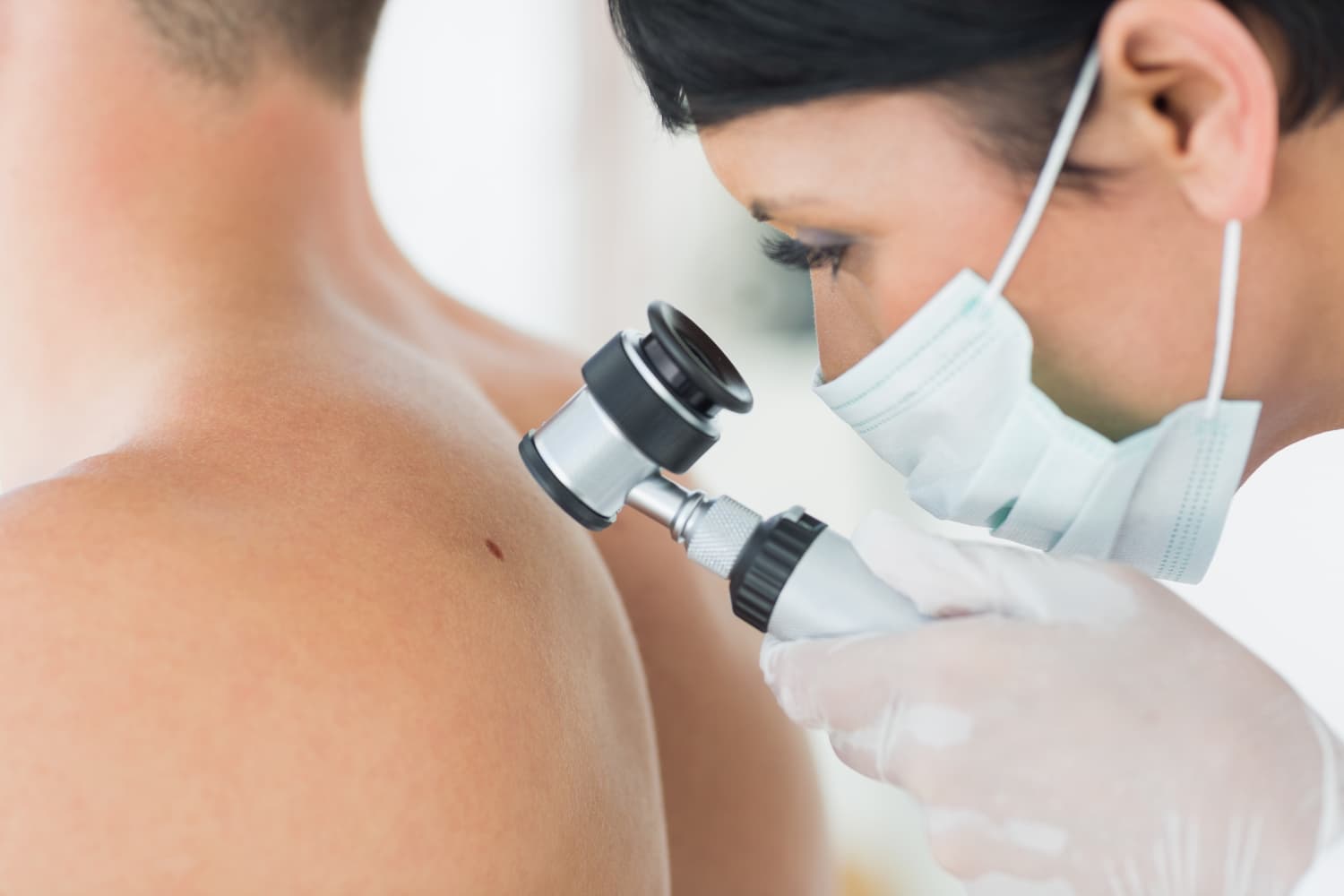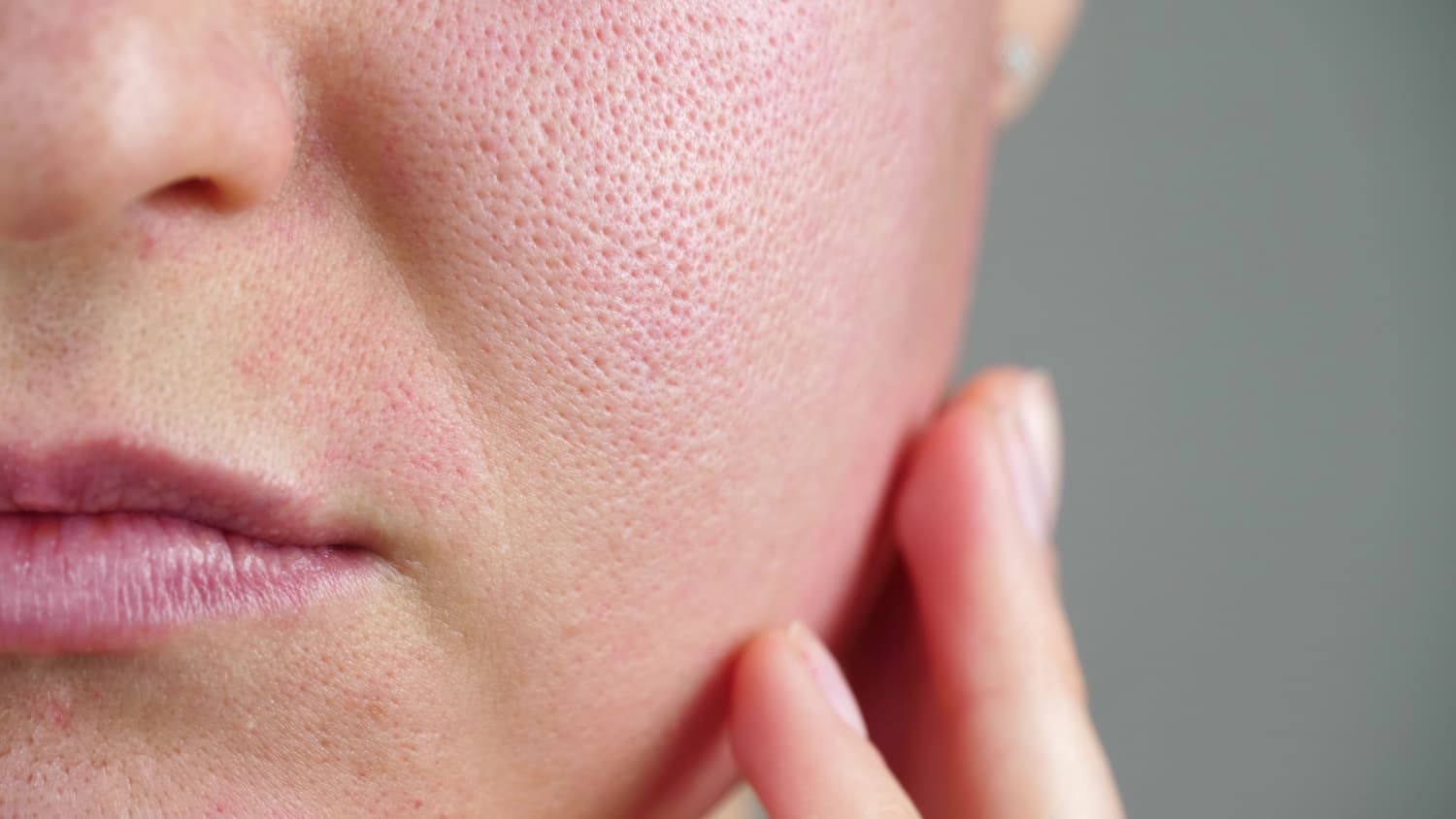A skin cancer diagnosis can be scary, but procedures like Mohs surgery are highly effective at treating some cancers. If your dermatologist has recommended Mohs surgery, you may wonder what to expect during and in the following weeks. Our certified dermatologists at Affiliated Dermatology have performed many of these procedures, so we want you to understand what the surgery entails and what you can expect from the recovery process.
What is Mohs Surgery?
Mohs surgery, developed by Dr. Frederic Mohs in the 1930s, is a common treatment for certain types of skin cancer. During the technique, a dermatologist removes cancerous tissue layer by layer until only cancer-free tissue remains. Each layer is removed and examined under a microscope to check for cancer cells. This allows the surgeon to determine when they’ve removed enough layers to eliminate the cancer.
Despite its age, Mohs surgery remains one of the most effective methods for removing cancer, boasting the highest cure rate among currently available treatments. Because it focuses on removing as little skin as possible, it’s especially useful in areas of the body that are cosmetically or functionally important.
How Much Can Mohs Surgery Cost?
Mohs surgery prices typically range from a few hundred to a few thousand dollars. In addition to factors that impact all prices, such as geographic location, the exact cost of Mohs surgery depends greatly on the complexity of the procedure and whether it’s performed in an inpatient or outpatient setting. Affiliated Dermatology will verify patient benefits and review expenses prior to even scheduling.
Before and After Mohs Surgery
Before Your Procedure
To ensure the greatest chances of success, it’s important to listen to your dermatologist’s instructions. Before the surgery, they’ll provide you with specific instructions tailored to your case. They’ll ask you to avoid certain medications or to wash the surgical area with an antibacterial soap. In addition to medical directions provided by the dermatologist, you should get a good night’s sleep and eat a light breakfast to help you maintain your comfort and energy levels during the procedure.
During the Surgery
Mohs surgery is performed under local anesthesia. This will numb the treatment area so you don’t feel anything but it means you’ll be awake during the procedure. During the surgery, the dermatologist will remove thin layers of cancer-containing skin and place them under a microscope. This process will continue until there’s no sign of cancer in the removed skin. The amount of time this takes depends on the number of layers that need to be removed to clear out the cancer.
The Mohs Surgery Recovery Process
The recovery process after Mohs surgery is typically uneventful. Immediately following the procedure, you may experience mild discomfort, swelling, or redness around the surgical site. These symptoms usually subside within a few days. The total healing time depends on the extent of the surgery and its location. The process can be sped up through careful wound care, including keeping the area clean, applying prescribed dressings, and taking recommended medications. The doctor will schedule follow-up visits to monitor the healing process and address complications.
What Does Skin Look Like After Mohs Surgery?
The appearance of your skin after the procedure depends a lot on how many layers of skin need to be removed. The visual impact will be more pronounced when a large area is treated or when the cancer is deeply embedded. Regardless of the extent of the cancer, your skin will appear red, swollen, or even bruised. Over time, the appearance of your skin will improve as the healing process completes.
How Long Do You Have to Keep Bandages on After Mohs Surgery?
Proper care after surgery is a requirement to ensure proper healing and minimize scarring. Your surgeon will likely apply a bandage over the treated area. This bandage must be kept dry and in place for at least a day or two. The dermatologist will tell you if it needs to stay on longer. The dermatologist will give you instructions on how to care for the area after that initial time is up. This will include instructions for cleaning and any reapplication of bandages that may be required.
Why Am I So Tired After Mohs Surgery?
It isn’t uncommon to feel fatigued after Mohs surgery. The body’s natural response to surgery is to redirect energy towards the healing process. This can lead to some tiredness. The emotional distress of cancer and treatment can also be emotionally draining. During this time, rest is a big part of the recovery process. Allowing your body to rest will give it the energy it needs to heal quickly.
Why Can’t You Exercise After Mohs Surgery?
The need for the body to maintain its energy for the healing process is one reason why exercise after Mohs surgery is a bad idea. Another is that exercise increases blood flow, which might cause bleeding, increase swelling, or otherwise disrupt the healing process. In addition, certain movements might cause stress on the surgical site, further delaying the healing process.
How long should you rest after Mohs surgery?
Like the overall recovery process, the length of time you should rest after Mohs surgery depends a lot on the specifics of the surgery. While many patients can resume normal activities after a day or so, it’s still advisable to avoid any strenuous activities or direct exposure to the sun for at least a week following the surgery. This will minimize the chances of complications.
What not to do after Mohs surgery
As mentioned earlier, it’s important to avoid direct sunlight in the surgical area, refrain from strenuous activities, and follow any post-surgery care instructions from your dermatologist. In addition to using the medications the doctor recommends, avoiding non-prescribed creams or remedies is also a good idea, as these may cause infections or other adverse reactions.
Tips for healing after Mohs Surgery
After the surgery, your surgeon will provide you with a list of things you can do to ensure the healing process goes as smoothly as possible. The list may have some items that are specific to your condition. For most people, to improve the outcomes of the procedure, you should:
- Keep the surgical area clean and dry
- Adhere strictly to wound care instructions provided by your surgeon, including applying prescribed medications or dressings
- Elevate the affected area to help reduce swelling
- Avoid activities that could disrupt the wound
- Ensure adequate protection against sun exposure
- Attend all follow-up appointments
Consult With a Dermatologist About Mohs Surgery
If you have a skin cancer diagnosis or suspect you might have skin cancer, it’s vital to take action as quickly as possible. The team at Affiliated Dermatology can help put you on the path to recovery. Text us at (480) 405-3877 to make an appointment, or use our convenient online form. To determine whether Mohs surgery is viable for your skin cancer, contact us today for a consultation.
Image Credit: Sofia Zhuravetc, Shutterstock






